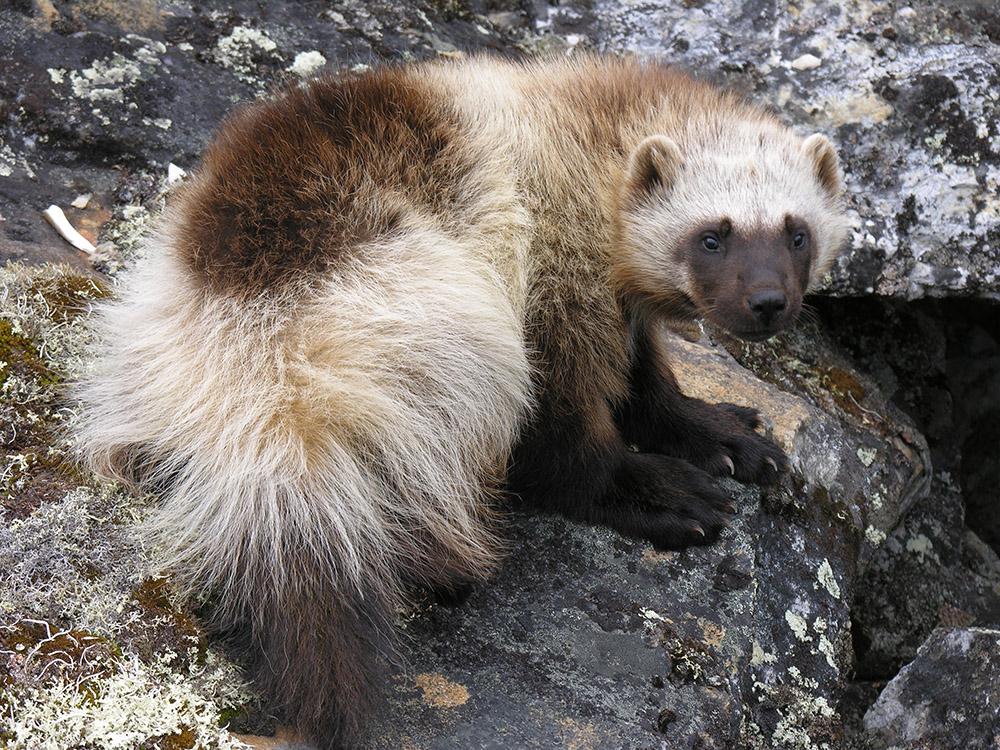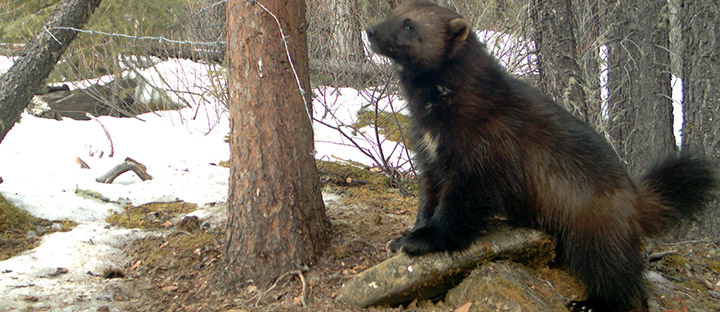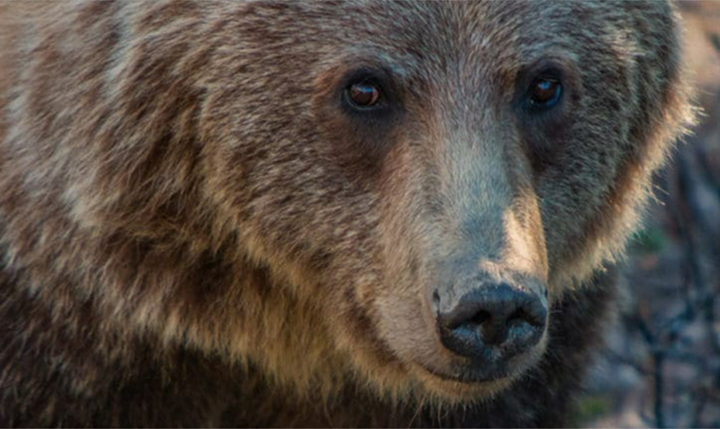New research indicates wolverine research and conservation can’t stop at political borders
Elusive, smart, few in number, and wary of people, the wolverine is considered one of the most difficult animals for scientists to study.
For the first time, a sweeping study reviews wolverine research from around the world since 2000 points to what wolverines need to survive in a rapidly changing world.
Published in the journal Global Ecology and Conservation, this study of 156 international peer-reviewed papers highlights several key findings:
- Wolverines are sensitive to people and development for multiple reasons; roads and rising temperatures in particular have major impacts
- Genetic variation is still fairly high in wolverine populations across much of their northern range; however, genetic diversity is relatively low in places where habitat is more fragmented, such as the lower 48 of the United States
- To produce healthy babies, female wolverines need snow and solitude to den
- Connectivity is needed, not just across landscapes but also among researchers, to understand what helps or hurts wolverines around the world
- Big protected areas and better management of connected landscape nearby are crucial for wolverine survival
Wolverines and their conservation have become growing concerns, especially in western North America where their range has shrunk dramatically. According to the paper’s lead author, Dr. Jason Fisher, this new review has several implications.
“One major takeaway from the last 20 years of research is wolverine research and conservation can’t stop at political borders,” says Fisher, a wildlife ecologist and adjunct professor at the University of Victoria’s School of Environmental Studies. “There also needs to be better collaboration among researchers, and communication with policymakers, to make better decisions for wolverines. The science shows that we already know a lot — we need to be sharing more and thinking and acting on bigger scales.”
Study coauthor Dr. Aerin Jacob, a conservation scientist with Yellowstone to Yukon Conservation Initiative (the organization that initiated, participated in, and funded the review) and adjunct professor at the University of Northern British Columbia, says wolverine is yet another example of a species that needs large landscape conservation and transboundary coordination to thrive.
“This research underscores the need for conservation strategies that protect wildlife and ecosystems from poorly planned development and human activities. To help species at risk of extinction, including wolverine, we need big protected areas, to retain and restore existing habitat connectivity, and stop climate change, as soon as possible,” says Jacob.
“Places like the Yellowstone to Yukon region are strongholds for wolverine because habitats are still largely connected. To make sure wolverine don’t lose genetic variation or go extinct from some of these places — the way animals such as grizzly bears or mountain caribou have — we have to get serious about action,” she says.

Fisher says, “The bottom line is wolverines are predictably sensitive to a number of stressors. Other species are too, it’s just that wolverines are particularly vulnerable. Good conservation decisions for wolverines, such as protecting and connecting habitat and reducing the impact of human activities, can benefit other animals that share the same habitat.”
“Wolverine is yet another example of a species that needs large landscape conservation and transboundary coordination to thrive.”
Dr. Aerin Jacob
Wolverines are the largest terrestrial member of the weasel family. A species that has naturally low population density, they require large tracts of intact, connected habitat to thrive.
Wolverine live in the northern boreal forest and mountains of western and northern North America and across northern Europe and Asia. Once found across the northern hemisphere, wolverine range and populations have shrunk dramatically over the last century, primarily due to trapping and habitat loss and fragmentation.
While wolverine is listed as a species of special concern in Canada there is no federal management plan; despite only having an estimated 300 animals in the lower 48 states, they have been repeatedly denied protection under the U.S. Endangered Species Act.
Read Wolverines (Gulo gulo) in a changing landscape and warming climate: A decadal synthesis of global conservation ecology research in Global Ecology and Conservation.


